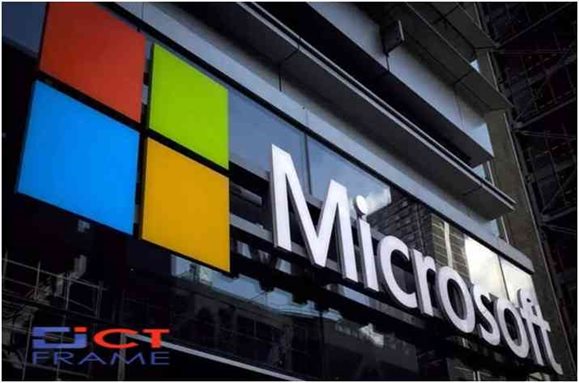Microsoft Launches a National Campaign to Support Community Colleges in their Efforts to Grow their Cybersecurity Workforce
31st October 2021, Kathmandu
The United States is facing a cybersecurity skills shortage: Microsoft has launched a national campaign to support community colleges in their efforts to grow their cybersecurity workforce.
The last year has seen a steady stream of headlines about cyber-attacks. Microsoft pledged $20 billion over five years to advance security solutions and protect customers, as well as $150 million to assist US government agencies in upgrading security.
Foreign governments have tampered with the software supply chain, hacked into sensitive government files, and targeted on-premise servers.
As documented in the most recent Microsoft Digital Defense Report, these attacks are increasing in number and sophistication. Microsoft claims to be constantly innovating and bringing new solutions to customers and individuals all over the world, such as passwordless login, identity management, endpoint security, and others.
However, this work has revealed a new and frightening reality: the country’s cybersecurity challenges are exacerbated in part by a severe labor shortage. We will fall short of strengthening the country’s cybersecurity protection until we address the cybersecurity workforce shortage.
That is why, Microsoft is launching a national campaign with US community colleges to help skill and recruit 250,000 people into the cybersecurity workforce by 2025, accounting for half of the country’s workforce shortage.
America’s critical cybersecurity workforce shortage
Two experiences that highlight the issues that must be addressed based on the official Microsoft blog by brad smith
The first was in February, Microsoft’s efforts to respond to sophisticated Russian attacks that stemmed from tampering with a SolarWinds software update last year.
The second moment occurred when a group of local business owners discussed their hiring problems. “Every small business and start-up I know are complaining they can’t find people with cybersecurity skills,” one person said. Even when the people changed the conversation remained the same.
Microsoft has worked to compare what we’ve been hearing with an analysis of larger data sets. As a result, Microsoft asked one of Its data analytics teams with assembling the best workforce data sets in the country, including those from LinkedIn and cyberseek.org. And the results are startling.
For nearly every two cybersecurity jobs in the United States, a third job is unfilled due to a scarcity of qualified candidates. In the United States, there are currently 464,200 open jobs that require cybersecurity skills. They account for 6% of all available jobs in the country.
More than one out of every twenty open jobs in America requires cybersecurity skills. And every projection indicates that the number of these jobs will increase even more in the coming years. They earn an annual salary of $105,800 on average. Some jobs in cybersecurity are full-time, such as chief information security officer, or CISO. Others combine cybersecurity and other IT functions.
Marshaling the nation’s resources
Microsoft has been working for months to develop a strategy to help expand and strengthen the cybersecurity workforce. Given the magnitude of the challenge, it became clear early on that success would necessitate the mobilization of the country’s most important resources.
This includes the efforts of nonprofit organizations as well as businesses in the technology sector. It will necessitate more work from the country’s four-year colleges and universities. But, above all, one conclusion consistently rose to the top. It is as follows: We must mobilize and enlist America’s community colleges in the cybersecurity fight.
Community colleges are the single most important potential asset the United States has in terms of expanding the cybersecurity workforce. They are one of the country’s most remarkable and pervasive assets, and with some targeted assistance, they can help address the cybersecurity workforce shortage quickly.
A new collaboration to help community colleges move more quickly
Microsoft’s goal has been to learn more about their requirements and how they can best assist community colleges. They’ve also spent time with national leaders at the American Association of Community Colleges and the National Cybersecurity Training & Education Center (NCyTE), which is located north of Seattle at Whatcom Community College in Bellingham, Washington.
One recurring theme was that when community colleges invest in and innovate with cybersecurity offerings, the payoff for students and the community is immediate. Students use the two cyber environments to attack and defend a fictitious city while learning about the various types of cybercrime. Students learn and progress at an impressive rate, even for a hardened cybersecurity expert.
some of the challenges that community colleges face
First, community colleges require access to cutting-edge curriculum materials that they can use immediately and widely to expand their courses.
Second, more faculty should be trained to teach in cybersecurity programs as well as courses they have never taught before in order to address emerging threats.
Third, they must expand financial aid and additional learning services to assist more students in pursuing cybersecurity degrees and certificates, particularly if we are to reach a more diverse population that is underrepresented in the cybersecurity field today.
If we can overcome these three obstacles, we will be able to leverage the power of the nation’s community colleges to address the cybersecurity workforce shortage.
Microsoft’s new cybersecurity job recruitment campaign
Microsoft announced the launch of a four-year campaign to help fill 250,000 cybersecurity jobs in the United States by the middle of this decade. This will address half of the cybersecurity workforce shortage in the United States. Our first commitment will be to:
Make curriculum available to all of the nation’s public community colleges for free.
Train new and existing faculty members at 150 community colleges.
Scholarships and additional resources will be provided to 25,000 students.
Provide community colleges with ready-to-teach curriculum developed by industry.
Microsoft will provide free curriculum, educator training, and teaching tools to every community college in the country (as well as all higher education institutions) through the Microsoft Learn for Educators program. This will include certification-aligned course materials for Microsoft Security, Compliance, and Identity Fundamentals (SC-900) and Microsoft Azure Security Technologies (AZ-500).
To help faculty at all of these institutions deliver Microsoft’s ready-to-teach curriculum, Microsoft will also provide access to additional resources such as free practice and certification exams, curriculum integration support, course delivery prep sessions led by Microsoft Technical Trainers, and membership in our global community of educators dedicated to helping students succeed. In addition, they will continue to develop and expand their efforts to provide educational institutions with easy access to courses via LinkedIn Learning.
Educator and administrative capacity in cybersecurity learning paths should be increased.
Microsoft will go even further with 150 community colleges, assisting them in hiring and retaining cybersecurity faculty. Microsoft will work with the National Cybersecurity Training & Education Center (NCyTE) to give teachers more chances for professional development and to help these schools earn the Center of Academic Excellence in Cyber Defense (CAE-CD) designation. This funding will help provide the groundwork for cybersecurity instruction at roughly 15% of community colleges across the country.
They’ll also collaborate with the American Association of Community Colleges to form a community of practice for colleges that provide cybersecurity training.
They will award funds to 42 community colleges that are advancing their cybersecurity programs, as well as technical help. Their goal is to take what we’ve learned from this project and look for methods to spread effective practices to other community schools around the country.
Microsoft is announcing the introduction of a new national Microsoft Cybersecurity Scholarship Program today. During the following four years, we will grant scholarships and other resources to at least 25,000 students.
This money will be used to complement existing federal, state, and other financial aid that is currently available but insufficient to satisfy student needs, particularly at the lowest end of the income scale.
This grant will assist with tuition costs as well as other financial obstacles that sometimes prevent students from finishing their courses, such as certification exam fees and childcare expenditures.
A campaign, not just a program
Microsoft understands the need of reaching out to other educational institutions. They’re already making plans to support other institutions, such as four-year schools and universities, as well as Hispanic-Serving Institutions across the country. Keep an eye on us as we take further moves in the coming months.
It’s about getting out there and persuading folks all throughout the country to think about pursuing a cybersecurity career. We must increase cybersecurity protection to be safeguarded.
To succeed, we’ll need a larger and more diversified cybersecurity workforce. There are a lot of great jobs out there that need to be filled. we must find talent and train people in the abilities they require.








